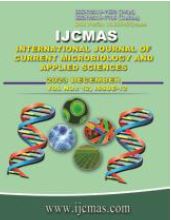


 National Academy of Agricultural Sciences (NAAS)
National Academy of Agricultural Sciences (NAAS)

|
PRINT ISSN : 2319-7692
Online ISSN : 2319-7706 Issues : 12 per year Publisher : Excellent Publishers Email : editorijcmas@gmail.com / submit@ijcmas.com Editor-in-chief: Dr.M.Prakash Index Copernicus ICV 2018: 95.39 NAAS RATING 2020: 5.38 |
A comprehensive investigation into the intricate predator-prey and host-parasitoid dynamics within the mulberry ecosystem was conducted throughout 2021-2022. The study identified five defoliator pests targeting mulberry plants and documented the presence of eight natural enemies. The defoliator pests included the Mulberry leaf roller (Glyphodes pyloalis Walker), Common cutworm (Spodoptera litura Fabricius), Tussock caterpillar (Euproctis fraterna Moore), Spanworm (Hemerophillaa trilineata Butler), and Green weevil (Myllocerus viridanus Fabricius). Among the natural enemies were Apanteles obliquae Wilkinson, Chelonus carbonator Marshall, Ichneumonid wasp, Disophrys sp., Tachinid fly, Megaselia scalaris, Cheilomeness exmaculata, and spiders. Glyphodes pyloalis emerged as the most prevalent defoliator pest, while Apanteles obliquae stood out as the predominant natural enemy. Notably, hymenopteran parasitoids such as Apanteles obliquae, Chelonus carbonator, Ichneumonid wasp, and the coccinellid predator Cheilomeness exmaculata were identified as potentially active natural enemies against Glyphodes pyloalis. The study revealed a synchronized pattern in the appearance and peak activity of Apanteles obliquae, Chelonus carbonator, Cheilomeness exmaculata, and Ichneumonid wasp with the population dynamics of Glyphodes pyloalis, highlighting their role in regulating defoliator pest populations in the mulberry ecosystem.
 |
 |
 |
 |
 |